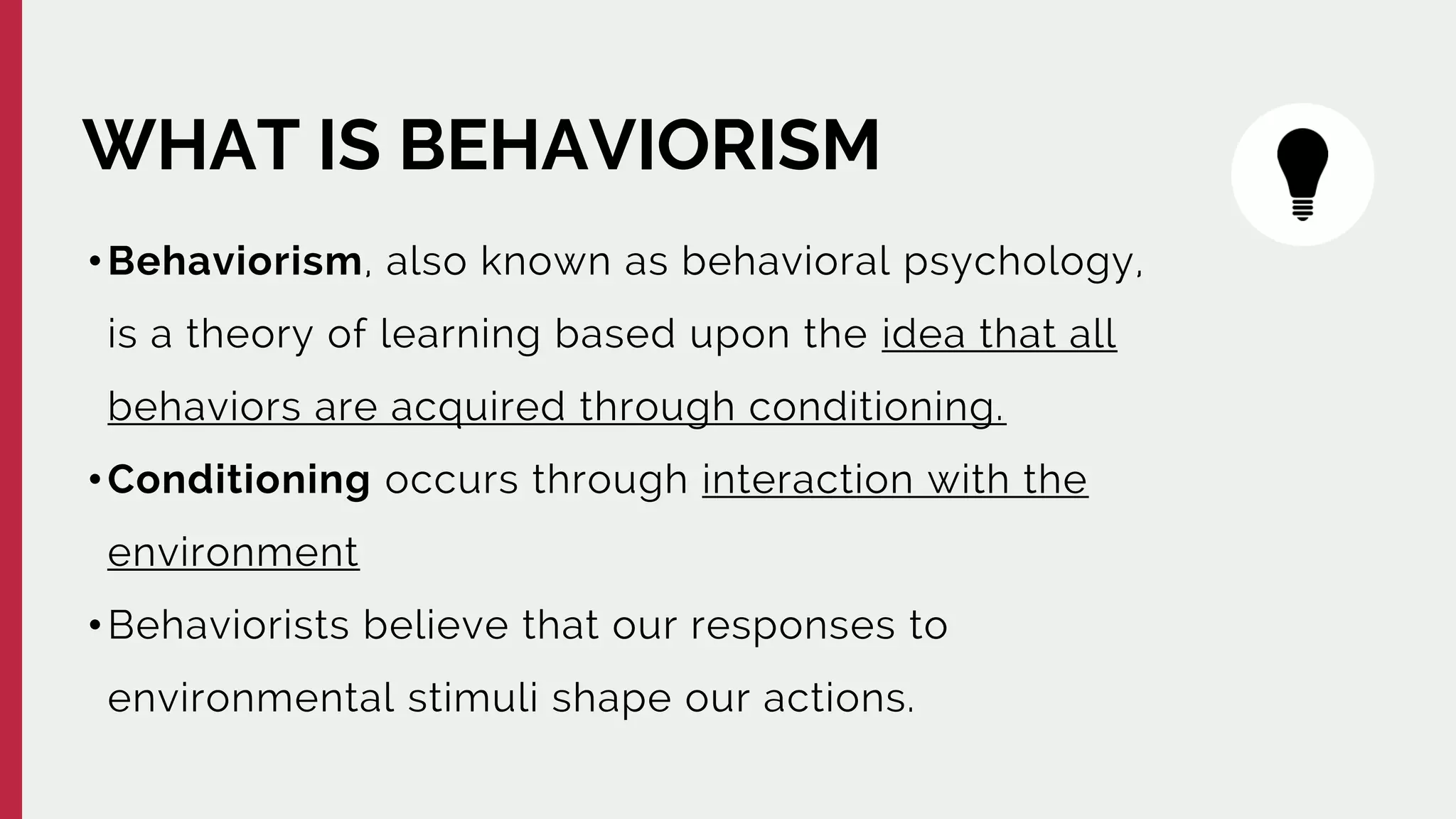- Behaviorism is a theory of learning based on conditioning through interactions with the environment. Classical conditioning involves pairing a neutral stimulus with an unconditioned stimulus to elicit the same response, as shown through Pavlov's dog experiments. Operant conditioning, developed by Skinner, demonstrates that behaviors followed by reinforcement will be repeated, while behaviors followed by punishment will not. Behaviorism provides frameworks used in physical therapy to shape patients' behaviors through reinforcement of positive responses.





















